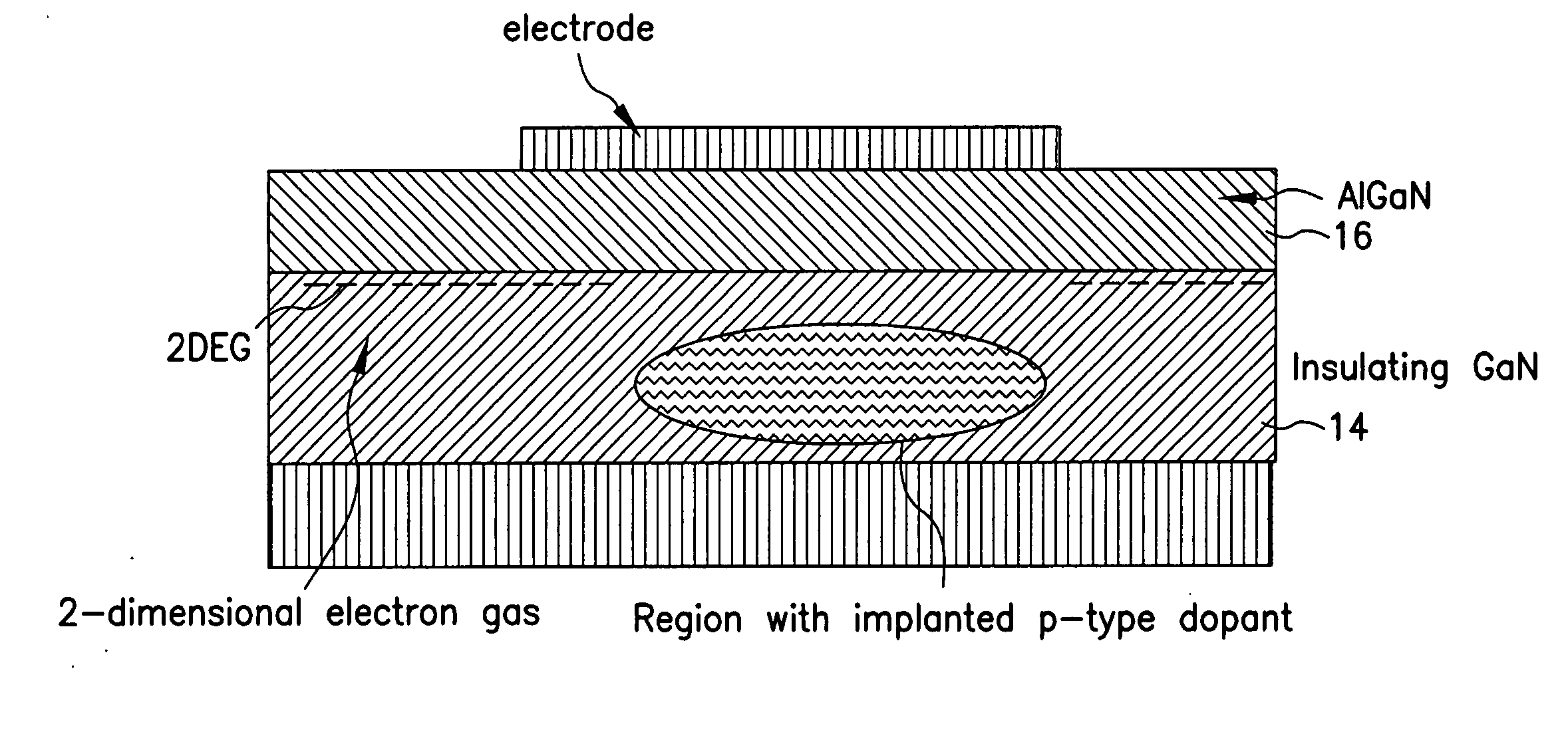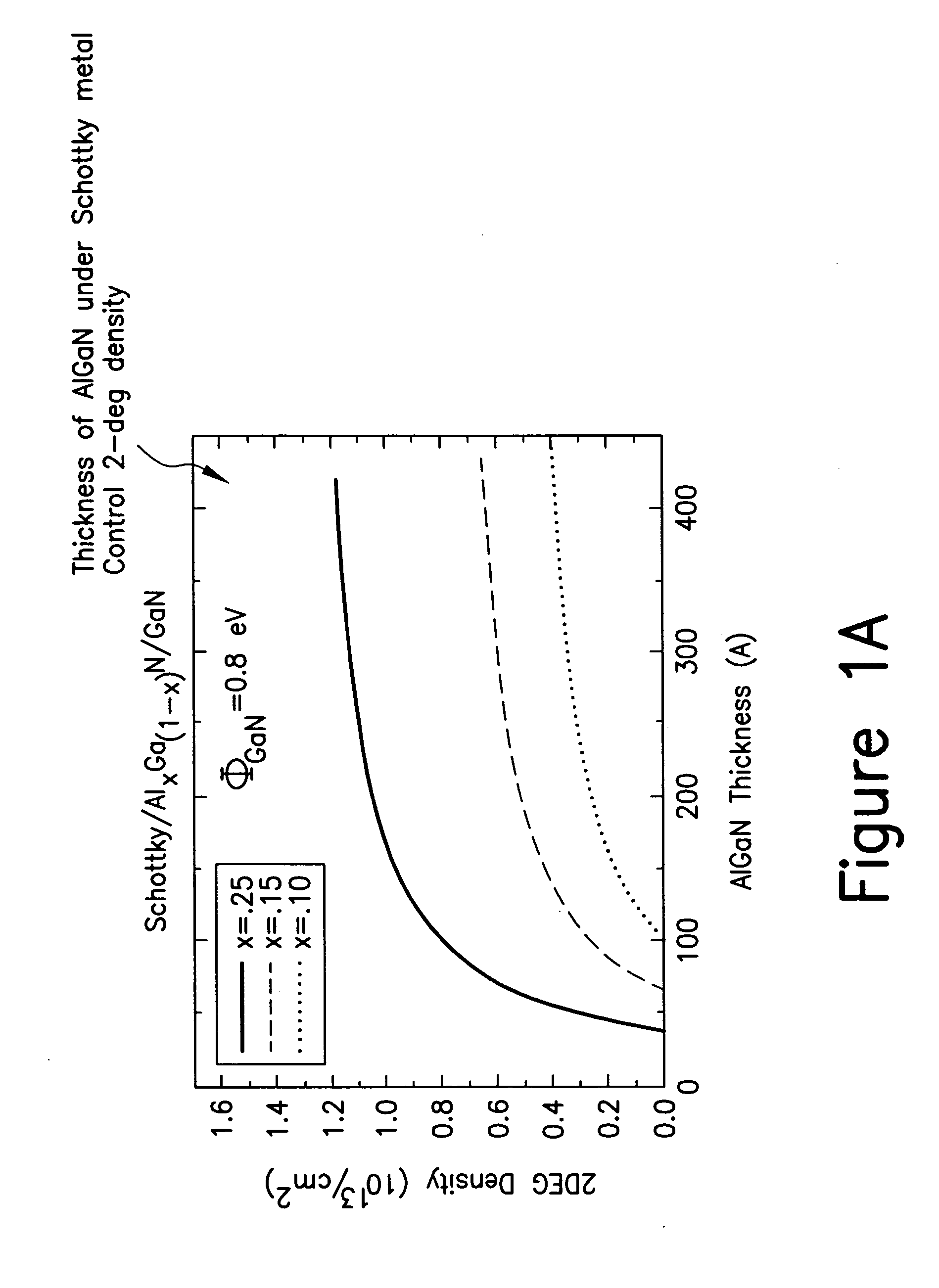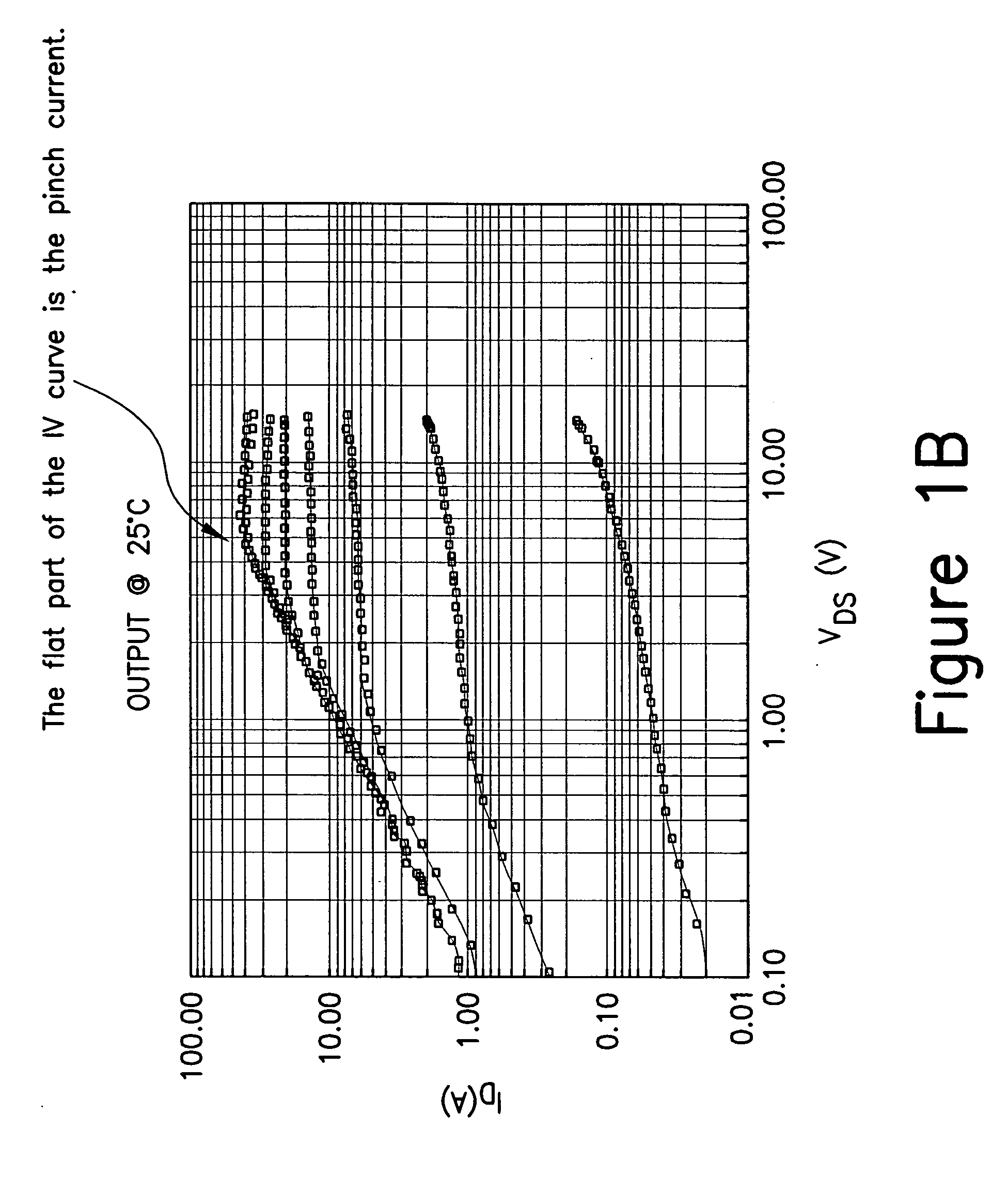III-nitride current control device and method of manufacture
a current control device and nitride technology, applied in the direction of semiconductor devices, basic electric elements, electrical apparatus, etc., can solve the problems of limited applicability to power management limited thickness of strained algan/gan systems, etc., to achieve high current densities with low resistive losses, low leakage, and high breakdown field
- Summary
- Abstract
- Description
- Claims
- Application Information
AI Technical Summary
Benefits of technology
Problems solved by technology
Method used
Image
Examples
Embodiment Construction
[0049] In the construction of GaN material devices, a number of factors come into play to impact the functionality and capability of the devices. A large lattice mismatch in III-nitride materials and the strong piezoelectric and polarization effects in these materials significantly impact the electrical properties of III-nitride heterojunction devices. A significant number of reported GaN-based devices to date use strained GaN-AlGaN junctions with alloy compositions that are designed to maximize the strain but avoid surpassing the relaxation limit that would lead to dislocations or long term instabilities in the devices. The devices generally are grown to maximize the strain within the limit of relaxation. As the thickness of AlGaN increases, or the Al content in AlGaN increases, the strain also increases which leads to the increase of the 2DEG density, as well as the carrier mobility. However, if the AlGaN layer is increased in thickness too much, or the Al content is too great, th...
PUM
 Login to View More
Login to View More Abstract
Description
Claims
Application Information
 Login to View More
Login to View More - R&D
- Intellectual Property
- Life Sciences
- Materials
- Tech Scout
- Unparalleled Data Quality
- Higher Quality Content
- 60% Fewer Hallucinations
Browse by: Latest US Patents, China's latest patents, Technical Efficacy Thesaurus, Application Domain, Technology Topic, Popular Technical Reports.
© 2025 PatSnap. All rights reserved.Legal|Privacy policy|Modern Slavery Act Transparency Statement|Sitemap|About US| Contact US: help@patsnap.com



